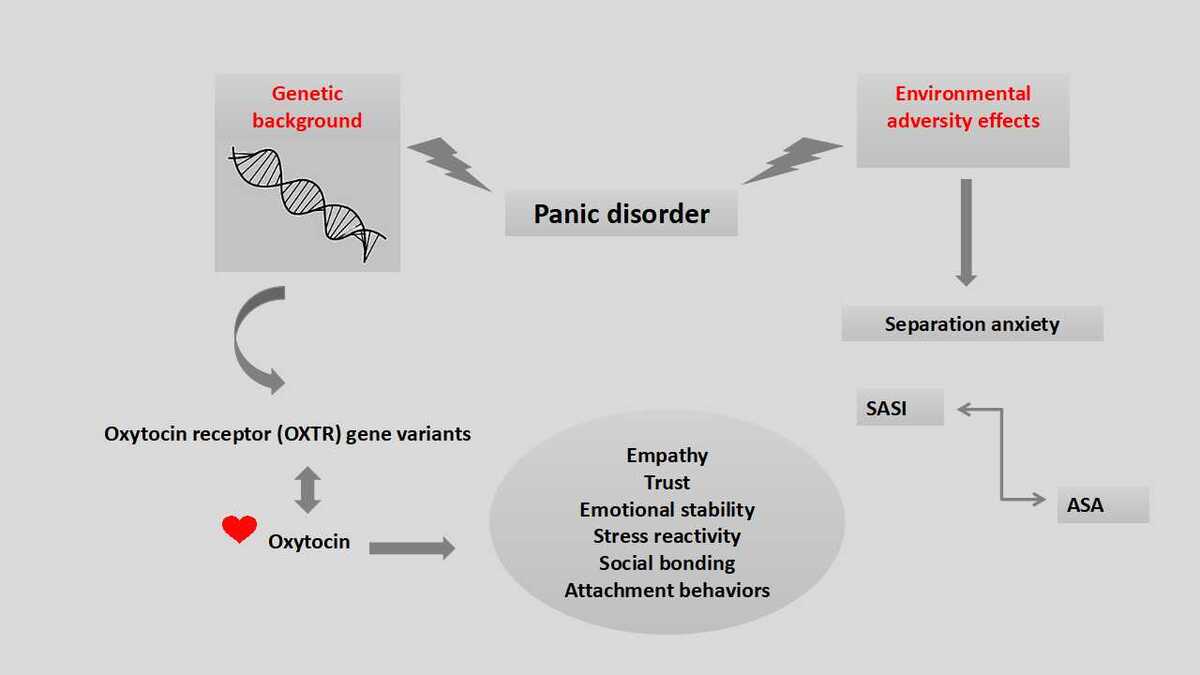Current issue
Archive
Manuscripts accepted
About the Journal
Editorial office
Editorial board
Section Editors
Abstracting and indexing
Subscription
Contact
Ethical standards and procedures
Most read articles
Instructions for authors
Article Processing Charge (APC)
Regulations of paying article processing charge (APC)
PSYCHIATRY / RESEARCH PAPER
Current perspectives on the role of oxytocin receptor (OXTR) gene variants in panic disorder: Associations with the disease liability and separation anxiety
1
Medical Laboratory Techniques Program, Vocational School of Health Services, Sinop University, Turkey
2
Department of Psychiatry, Faculty of Medicine, Ondokuz Mayıs University, Turkey
3
Department of Statistics, Faculty of Science and Arts, Sinop University, Turkey
Submission date: 2024-10-17
Final revision date: 2025-01-16
Acceptance date: 2025-01-22
Online publication date: 2025-04-20
Corresponding author
Zeynep Yegin
Medical Laboratory Techniques Program, Vocational School of Health Services, Sinop University, Sinop, Turkey
Medical Laboratory Techniques Program, Vocational School of Health Services, Sinop University, Sinop, Turkey
KEYWORDS
TOPICS
ABSTRACT
Introduction:
Oxytocin receptor (OXTR) gene variations are associated with empathy, trust, emotional stability, stress reactivity, social bonding and attachment behaviors. We aimed to explore the impact of three OXTR gene variations (rs53576, rs237902, rs2254298) in susceptibility to panic disorder (PD). We also investigated the possible effects of these variants with separation anxiety scales in the patients with a comprehensive approach covering environmental adversity effects.
Material and methods:
The hypothesis was studied in PD patients and healthy controls with Polymerase Chain Reaction-Restriction Fragment Length Polymorphism (PCR-RFLP) method. By applying the Separation Anxiety Symptom Inventory (SASI) and the Adult Separation Anxiety Questionnaire (ASA), the relationships between the OXTR gene variants and these scales were also evaluated comprehensively.
Results:
A statistically significant association was found in terms of OXTR rs237902; A allele frequency increased PD probability by 1.585-fold. Moreover, all of the analyzed OXTR variants were found to be associated with childhood and adult separation anxiety possibilities in the patients in the combined analyses of various demographic and clinical data; a striking effect of AA genotype with SASI and ASA was observed in these models.
Conclusions:
The study proves the involvement of oxytocinergic gene variants in PD and it also represents one of the most profound models in terms of gene-environment (GxE) interactions.
Oxytocin receptor (OXTR) gene variations are associated with empathy, trust, emotional stability, stress reactivity, social bonding and attachment behaviors. We aimed to explore the impact of three OXTR gene variations (rs53576, rs237902, rs2254298) in susceptibility to panic disorder (PD). We also investigated the possible effects of these variants with separation anxiety scales in the patients with a comprehensive approach covering environmental adversity effects.
Material and methods:
The hypothesis was studied in PD patients and healthy controls with Polymerase Chain Reaction-Restriction Fragment Length Polymorphism (PCR-RFLP) method. By applying the Separation Anxiety Symptom Inventory (SASI) and the Adult Separation Anxiety Questionnaire (ASA), the relationships between the OXTR gene variants and these scales were also evaluated comprehensively.
Results:
A statistically significant association was found in terms of OXTR rs237902; A allele frequency increased PD probability by 1.585-fold. Moreover, all of the analyzed OXTR variants were found to be associated with childhood and adult separation anxiety possibilities in the patients in the combined analyses of various demographic and clinical data; a striking effect of AA genotype with SASI and ASA was observed in these models.
Conclusions:
The study proves the involvement of oxytocinergic gene variants in PD and it also represents one of the most profound models in terms of gene-environment (GxE) interactions.
We process personal data collected when visiting the website. The function of obtaining information about users and their behavior is carried out by voluntarily entered information in forms and saving cookies in end devices. Data, including cookies, are used to provide services, improve the user experience and to analyze the traffic in accordance with the Privacy policy. Data are also collected and processed by Google Analytics tool (more).
You can change cookies settings in your browser. Restricted use of cookies in the browser configuration may affect some functionalities of the website.
You can change cookies settings in your browser. Restricted use of cookies in the browser configuration may affect some functionalities of the website.



